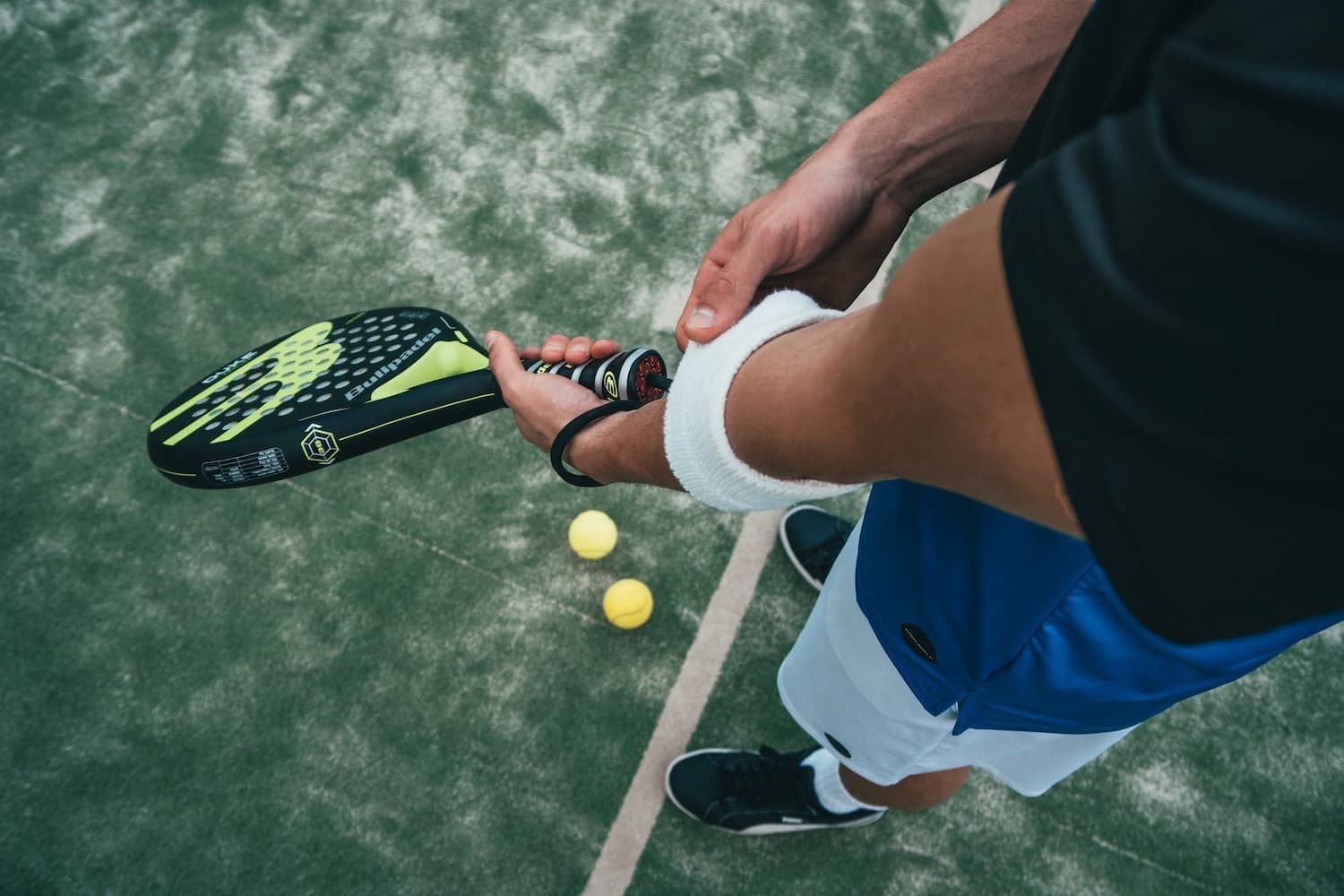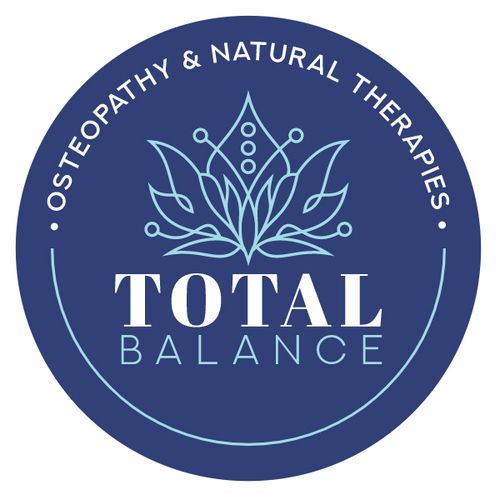
Tennis elbow is a common injury but, despite the name, it is not just caused by playing tennis or associated with tennis players. It can be caused by repetitive motions of the arm and can be defined as a form of tendonitis. However, you don't have to rely on over-the-counter pain relievers to manage the pain and treat the condition. There are some fantastic natural remedies that can help.
What is Tennis Elbow?
Tennis elbow is also known as lateral epicondylitis. It is a condition that causes pain and inflammation in the elbow joint, where the tendons from the forearm muscles attach to the bony bump on the outer elbow (known medically as the lateral epicondyle). The extensor carpi radialis brevis is the main tendon affected, but other tendons in the forearms can also be torn.
A common symptom of tennis elbow is pain in the elbow joint that travels to the forearm and wrist along the radial nerve. Other symptoms of tennis elbow include weak grip strength, arm pain when bending it and weakness in arm muscles. The pain generally comes on slowly and is made worse by using the extensor muscles during forearm activity.
Tennis elbow is caused by the degeneration of the tendon fibres as a result of overusing the muscles that bend the wrist back and lift the hand. It is most common in people between 35 and 55, but it can occur in all age groups. In addition to playing tennis, this painful condition may be caused by everyday activities that potentially strain the extensor muscles such as gardening, painting, using a screwdriver, and so on — any activity that involves repetitive movements.
Understanding the Causes and Risk Factors of Tennis Elbow
Tennis elbow, scientifically known as lateral epicondylitis, is a common condition that can occur in anyone who engages in repetitive arm movements. Knowing the causes and risk factors associated with tennis elbow will help you better understand this condition.
The following factors contribute to the development of tennis elbow:
-
Repetitive Arm Movements: Engaging in activities that involve repetitive arm motions, such as playing tennis, golf, or using hand tools, can strain the tendons in the elbow over time. The repeated gripping, twisting and extension of the forearm muscles create microtears in the tendon, leading to inflammation and pain.
-
Improper Technique: Incorrect form or technique while performing sports or manual labour can increase the risk of developing tennis elbow. Straining the forearm muscles by using excessive force, making abrupt movements or using poor body mechanics can put additional stress on the tendons and contribute to the condition.
-
Age and Degeneration: As we age, the tendons in our body undergo natural wear and tear. The ageing process can weaken the tendons, making them more susceptible to injury and inflammation. Degenerative changes in the tendon can also contribute to the development of tennis elbow.
While anyone can develop tennis elbow, certain factors increase the likelihood of experiencing this condition:
- Age and Gender: Tennis elbow commonly affects individuals between the ages of 30 and 50. Moreover, research suggests that men and women are equally susceptible to tennis elbow, although men may be more prone to severe cases.
- Occupation and Activities: Jobs or hobbies that involve repetitive arm movements or prolonged gripping, such as carpentry, painting, plumbing, cooking or playing musical instruments, can put individuals at a higher risk.
- Lack of Conditioning: Insufficient conditioning or lack of strength in the forearm muscles can contribute to the development of tennis elbow. Weak muscles may not adequately support the tendons, making them more vulnerable to strain and injury.
- Previous Injuries: Individuals who have previously experienced an elbow or forearm injury, even if unrelated to tennis elbow, may have a higher risk of developing the condition. The weakened or damaged tissues are more susceptible to subsequent injuries.
Recognising the Symptoms and Diagnosis of Tennis Elbow
Understanding the specific symptoms associated with tennis elbow enables individuals to seek appropriate treatment promptly and prevent the condition from worsening. Furthermore, a correct diagnosis allows healthcare professionals to develop an effective treatment plan tailored to the patient's needs.
The following symptoms are typically associated with tennis elbow:
-
Elbow Pain: The primary symptom of tennis elbow is pain on the outer part of the elbow. The pain may radiate down the forearm and worsen with activities that involve gripping or lifting objects. Initially, the pain may be mild and intermittent, but it can progress to become more persistent and severe over time.
-
Weakness and Difficulty with Grip: Individuals with tennis elbow may experience weakness in their grip strength. Tasks that require grasping, such as shaking hands, turning a doorknob or lifting objects, may become challenging. The weakened grip can lead to difficulties in daily activities.
-
Tenderness: The outer side of the elbow can become tender to touch in individuals with tennis elbow. Applying pressure or lightly tapping the affected area may elicit pain.
-
Stiffness and Limited Range of Motion: Some individuals may experience stiffness in the elbow joint, resulting in a decreased range of motion. Straightening the arm fully or performing certain movements may be uncomfortable or painful.
Let's explore the diagnostic methods used to identify tennis elbow, enabling individuals to seek appropriate treatment and relief. Healthcare professionals typically follow these steps:
Look at the patient's medical history
The doctor will begin by discussing the individual's symptoms, their medical history, and any activities that may have contributed to the onset of elbow pain. Providing information about the duration, intensity and factors that aggravate the pain is crucial for an accurate diagnosis.
Conduct physical examination
A physical examination will be conducted to assess the affected elbow. The doctor will check for signs of tenderness, swelling and range of motion limitations. They may also perform specific tests to reproduce the pain, such as resisted wrist or finger extension.
Perform imaging tests
In most cases, imaging tests are not required to diagnose tennis elbow. However, in situations where the diagnosis is uncertain or if an underlying condition is suspected, the doctor may order imaging tests like X-rays or magnetic resonance imaging (MRI) to rule out other potential causes of elbow pain.
Conduct differential diagnosis
The healthcare professional will consider other conditions that may present similar symptoms, such as arthritis, bursitis or nerve impingement, to ensure an accurate diagnosis. This may involve additional tests or consultations with specialists if needed.
Preventing Tennis Elbow: Effective Techniques for Injury Prevention
While it can be challenging to completely eliminate the risk of tennis elbow, there are preventive measures individuals can take to minimise their chances of developing this condition. Here are six effective prevention techniques that can help safeguard against tennis elbow and promote overall arm health.
1. Proper Technique and Form
One of the key factors in preventing tennis elbow is using proper technique and form during activities that involve repetitive arm movements. Whether playing sports like tennis or engaging in manual labour tasks, it is important to ensure that the body mechanics are correct. Focus on using the larger muscles of the arm and shoulder to distribute the force evenly, rather than putting excessive strain on the elbow tendons. Seek guidance from a coach, instructor or professional to learn and practise the correct technique for your specific activity.
2. Gradual Increase in Intensity
Avoid sudden increases in the intensity or duration of activities that stress the forearm muscles and tendons. Gradually build up strength and endurance over time, allowing the body to adapt to the demands placed on it. This gradual progression reduces the risk of overuse injuries, including tennis elbow. Additionally, incorporate regular rest periods into your routine to provide ample time for recovery and tissue repair.
3. Equipment and Tool Modifications
Using appropriate equipment and tools can play a crucial role in preventing tennis elbow. Ensure that sports equipment, such as tennis racquets or golf clubs, are properly fitted to your hand size and grip strength. This can help distribute forces more evenly and reduce strain on the tendons. In manual labour tasks, consider ergonomic tools with cushioned handles and adjustable grips that minimise the stress on the forearm muscles and tendons.
4. Strengthening and Stretching Exercises
Engaging in specific strengthening and stretching exercises for the forearm muscles can help prevent tennis elbow. Strengthening exercises, such as wrist curls, forearm curls and grip exercises, can improve the overall strength and stability of the muscles and tendons. Stretching exercises, including wrist extensions and forearm stretches, help maintain flexibility and reduce muscle imbalances. Incorporate these exercises into your regular fitness routine to enhance forearm strength and flexibility.
5. Adequate Warm-up and Cool-down
Always begin your physical activities with a proper warm-up session to prepare your muscles and tendons for the upcoming demands. Gentle aerobic exercises, joint mobilisation and dynamic stretches can help increase blood flow and warm up the muscles. Similarly, conclude your activities with a cool-down phase that includes static stretches to promote flexibility and facilitate muscle recovery.
6. Listen to Your Body
Pay attention to any early signs of discomfort or pain in your elbow or forearm. If you experience persistent pain or notice any changes, it is important to modify or reduce your activity levels to avoid further strain. Ignoring warning signs can exacerbate the condition and lead to more serious injuries.
Natural Treatment Choices for Tennis Elbow
Surgical treatment is not the only way to address severe pain linked to tennis elbow. There are several non-surgical treatments available to help with chronic pain and arm movements. Traditional Chinese Medicine, physical therapy and tennis elbow strengthening exercises, among other natural remedies, can help speed up the healing process and increase range of motion. The following are some of the most common natural therapies that people with tennis elbow can include in their treatment plan:
The RICE Method for Tennis Elbow
The RICE method for treating tennis elbow is as follows:
- Rest the injury immediately.
- Ice the area as soon as possible in order to reduce the swelling and inflammation. Never apply ice directly to the skin – cover the area with a clean cloth or towel first.
- Compress the area to limit swelling and bleeding. Do not wrap the elbow so tightly that you restrict circulation of blood to the area.
- Elevate the elbow above the heart to improve fluid drainage.
When using ice and compresses, leave them on for half an hour and remove for 15 minutes before repeating. This will ensure that blood flow is not interrupted.
Source: Top 10 Home Remedies
Acupuncture for Tennis Elbow
Acupuncture is a popular branch of Traditional Chinese Medicine, and an effective treatment for tennis elbow. It involves the use of fine needles in order to correct the flow of qi or energy in the body. It is a painless treatment, and many people find it very relaxing. For tennis elbow, acupuncture is used largely to provide pain relief. Studies have shown that acupuncture needles relieve tennis elbow pain for significantly longer than placebos, such as sham acupuncture, and they also provide an overall improvement in the level of pain felt. If you don't like the thought of needles, laser acupuncture is an excellent alternative to traditional acupuncture treatment.
Nutrition for Tennis Elbow
Proper nutrition can be helpful for preventing and easing the effects of tennis elbow symptoms. Vitamin C is vital for the repair of injured tendons as it speeds cellular growth and repair.
Vitamin A in the form of beta-carotene is also important as it is needed for collagen synthesis. Vitamin E is an antioxidant that destroys free radicals that are released by inflammation in the body.
Zinc is also necessary as it works with vitamin A to repair fibrous tissue and reduce inflammation. Vitamin E taken with selenium limits inflammation and speeds up healing. Add turmeric and cumin to your meals as they are known for their anti-inflammatory effects. Bromelain, found in pineapples, reduces pain and swelling.
Glucosamine supplements, combined with a healthy diet, can help to rebuild damaged cartilage with few side effects. As an anti-inflammatory and painkiller, it is helpful for the long-term treatment of chronic tennis elbow.
Herbal Medicine for Tennis Elbow
The inflammation that causes pain in tennis elbow can be helped using herbal medicines. A practitioner of Traditional Chinese Medicine can recommend the best herbal medicine that you can use in the treatment of tennis elbow. Some effective remedies include:
- St John's Wort soothes pain and calms the nerve.
- Fenugreek seeds and milk made into a paste and spread over the affected area is helpful as fenugreek is anti-inflammatory.
- Curcumin is an extract of turmeric and is a strong anti-inflammatory that can treat severe elbow pain.
- Ginger is a natural herb that reduces inflammation and pain, and can help speed up the healing process without causing any of the adverse events that are common in anti-inflammatory drugs.
Homoeopathy for Tennis Elbow
Homoeopathy works best when the pain of tennis elbow is acute. The following remedies may be useful:
- Arnica – if the elbow feels sore, bruised and inflamed from injury or overuse. The elbow is aggravated by movement and touch.
- Rhus tox – when you find it difficult to rest as it causes stiffness. It's commonly used for tennis elbow that improves with heat and is often worse upon waking.
- Ruta – for tennis elbow that is slow to heal, and the joint feels achy, weak and stiff.
Tissue Salts for Tennis Elbow
Tissue salts are a natural mineral supplement that can help repair damaged tissue and prevent inflammation, thanks to their anti-inflammatory process. The following tissue salts may be used for tennis elbow treatment:
- Ferr phos – for inflammation where heat and pain feature
- Calc fluor – is helpful for knots, swelling or calcium deposits in the tendon
- Silicea – is helpful for treating injuries that are slow to heal
Exercises for Tennis Elbow
Physical therapists may choose to recommend a series of exercises to gradually stretch and strengthen the muscles of the arm, especially the forearm. The therapist will show you how to safely and correctly perform different exercises, and once learned, these can be performed at home or at work—wherever it is convenient for you—to expedite your tennis elbow recovery.
The benefits of treating tennis elbow naturally, rather than with medication or surgery, include a decreased risk of side effects, improved healing time and lower costs. It can take several weeks to see results from a natural treatment program for tennis elbow, but the long-term benefits can be significant.
To prevent tennis elbow from occurring in the first place, it is important to maintain good arm posture and use proper form when engaging in sports, handling sports equipment or doing other daily activities that involve the arms. Exercising and stretching the forearm muscles can also help to reduce the risk of injury. Yoga and stretching exercises not only improve flexibility and strength, but they also reduce the risk of developing tennis elbow.
Promising Results of Clinical Studies
Clinical research related to natural therapies for tennis elbow has focused on evaluating the effectiveness of various treatments in managing symptoms and promoting healing. While specific clinical trials and studies vary in methodology and outcomes, here is a general summary of some research findings:
-
Acupuncture: Several studies have explored the use of acupuncture as a potential natural therapy for tennis elbow. A systematic review and meta-analysis of randomised controlled trials suggested that acupuncture can provide short-term pain relief and improve functional outcomes compared to sham acupuncture or conventional treatments. However, further research is needed to establish its long-term efficacy.
-
Herbal Remedies: Certain herbal remedies have been investigated for their potential benefits in treating tennis elbow. One study examined the effects of a topical herbal ointment containing medicinal plants and found that it significantly reduced pain and improved grip strength compared to a placebo. However, more rigorous studies are needed to confirm these findings and determine the optimal formulations.
-
Massage Therapy: Clinical trials have assessed the effectiveness of massage therapy in managing tennis elbow symptoms. A randomised controlled trial demonstrated that deep friction massage, a specific technique targeting the affected tendons, resulted in significant pain reduction and improved function compared to a control group. Massage therapy may aid in promoting blood flow, reducing inflammation and enhancing tissue healing.
-
Supplements and Nutritional Interventions: Some studies have explored the role of supplements and nutritional interventions in tennis elbow management. For example, omega-3 fatty acid supplementation has been investigated for its potential anti-inflammatory effects. While some studies suggest a potential benefit, the evidence is not yet conclusive, and further research is required to establish the optimal dosage and duration of supplementation.
-
Physical Therapy and Exercise: Clinical research consistently supports the efficacy of physical therapy and specific exercise programs in managing tennis elbow. Eccentric exercises, where the muscle lengthens under resistance, have shown positive outcomes in reducing pain and improving function. Additionally, techniques such as stretching, strengthening exercises and manual therapy provided by physical therapists can help alleviate symptoms and promote recovery.
If you have received a diagnosis of tennis elbow and are experiencing pain and inflammation, try using one or more of the natural therapies above. Be sure to talk to a healthcare professional before starting any new treatment program for tennis elbow to get a better understanding of your treatment choices.
Originally published on Feb 04, 2009








